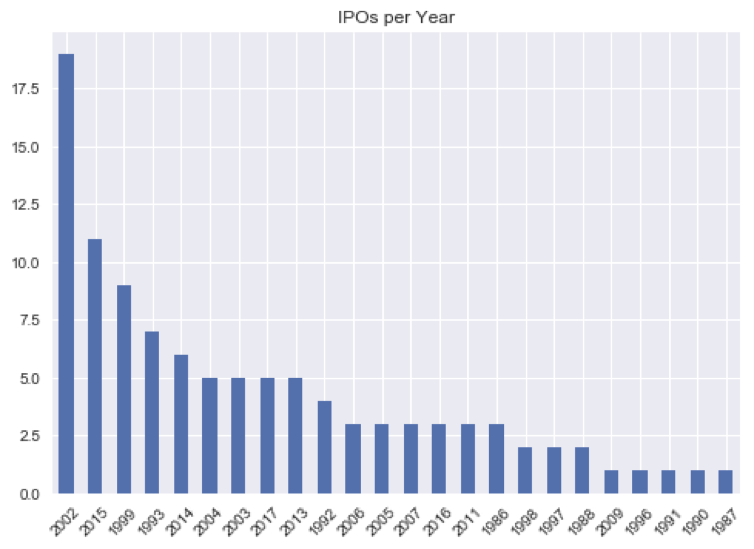Summarize categorical variables
Importing and Managing Financial Data in Python

Stefan Jansen
Instructor
From categorical to quantitative variables
- So far, we have analyzed quantitative variables
- Categorical variables require a different approach
- Concepts like average don't make much sense
- Instead, we'll rely on their frequency distribution
Categorical listing information
amex = pd.read_excel('listings.xlsx', sheet_name='amex',
na_values=['n/a'])
amex.info()
RangeIndex: 360 entries, 0 to 359
Data columns (total 7 columns):
# Column Non-Null Count Dtype
-- ------ -------------- -----
0 Stock Symbol 360 non-null object
1 Company Name 360 non-null object
2 Last Sale 346 non-null float64
3 Market Capitalization 360 non-null float64
4 IPO Year 105 non-null float64
5 Sector 238 non-null object
6 Industry 238 non-null object
dtypes: float64(3), object(4)
Categorical listing information
amex = amex['Sector'].nunique()
12
apply(): call function on each columnlambda: "anonymous function", receives each column as argumentx
amex.Sector.apply(lambda x: x.nunique())
Stock Symbol 360
Company Name 326
Last Sale 323
Market Capitalization 317
...
How many observations per sector?
amex['Sector'].value_counts()
Health Care 49 # Mode
Basic Industries 44
Energy 28
Consumer Services 27
Capital Goods 24
Technology 20
Consumer Non-Durables 13
Finance 12
Public Utilities 11
Miscellaneous 5
...
How many IPOs per year?
amex['IPO Year'].value_counts()
2002.0 19 # Mode
2015.0 11
1999.0 9
1993.0 7
2014.0 6
2013.0 5
2017.0 5
...
2009.0 1
1990.0 1
1991.0 1
Name: IPO Year, dtype: int64
Convert IPO Year to int
ipo_by_yr = amex['IPO Year'].dropna().astype(int).value_counts()
ipo_by_yr
2002 19
2015 11
1999 9
1993 7
2014 6
2004 5
2003 5
2017 5
...
1987 1
Name: IPO Year, dtype: int64
Convert IPO Year to int
ipo_by_yr.plot(kind='bar', title='IPOs per Year')
plt.xticks(rotation=45)

Let's practice!
Importing and Managing Financial Data in Python

